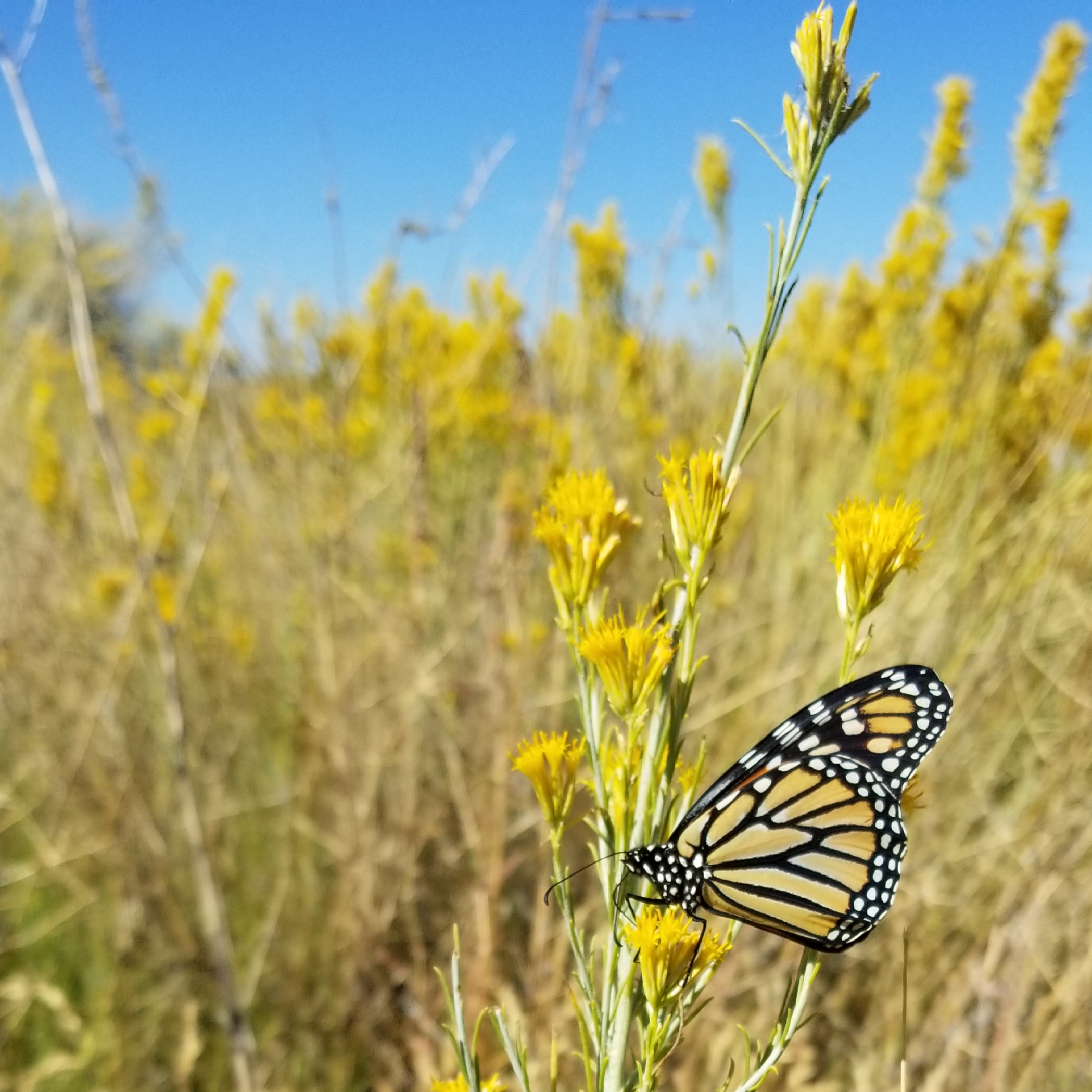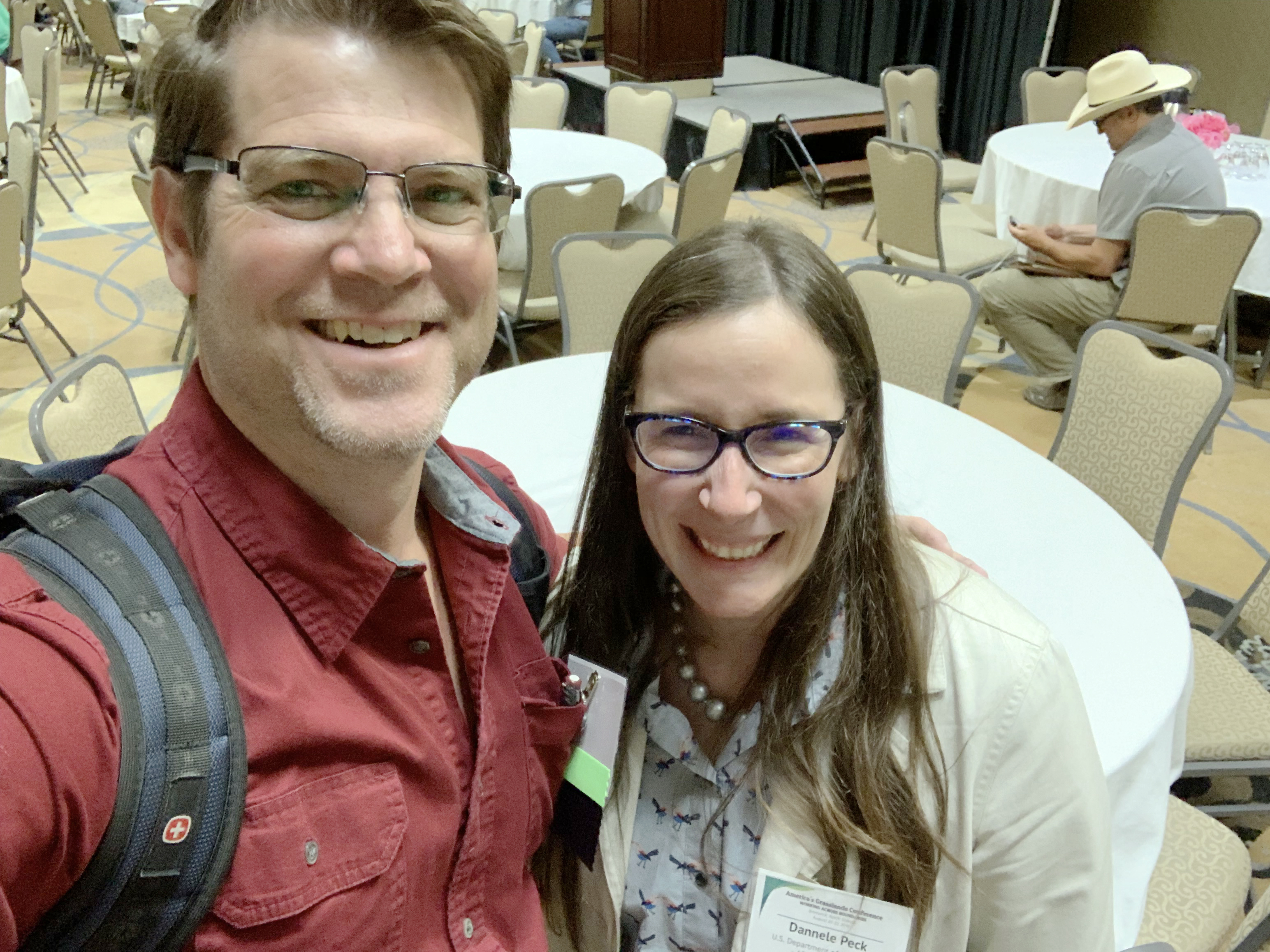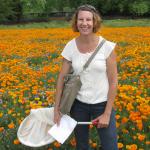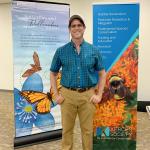Select monthly updates from our team of restoration ecologists, entomologists, plant ecologists, and researchers.
The Xerces Society manages the largest pollinator conservation program in the world. We work with farmers, gardeners, land managers, agency staff, and others to create habitat for bees, butterflies, and beneficial insects—and hundreds of thousands of acres of flower-rich habitat have been planted. We also offer certifications: Bee Better Certification for farmers and food companies who are committed to supporting pollinator conservation in agricultural lands, and Bee City USA and Bee Campus USA certifications for cities and colleges dedicated to making the world safer for pollinators.
With staff based in more than a dozen states, and offering a diverse array of expertise, it can be challenging to summarize the impactful work being done by our team of restoration ecologists, entomologists, plant ecologists, and researchers. Therefore, we have compiled select pollinator conservation program updates into monthly digests. September’s featured staff members have been busy, providing Monarch and Pollinator Habitat Kits to select organizations in California, training Colorado Department of Transportation staff on establishing and maintaining roadside pollinator habitat, and attending the America’s Grasslands Conference, held this year in North Dakota.
Supporting Western Monarch Conservation with Monarch and Pollinator Habitat Kits
Angela Laws, Monarch and Pollinator Ecologist, and Jessa Kay Cruz, Senior Pollinator Conservation Specialist, California
It’s been a rough year for the western monarch butterfly, whose population plummeted by 84% since the previous winter, resulting in a more than 99% decline since the 1980’s. In response to these devastating statistics, the Xerces Society has been stepping up our efforts to help this iconic species recover (please see our Western Monarch Call to Action).
Monarch and Pollinator Habitat Kits are one of Xerces’ new approaches to restoring and creating critical habitat for monarchs in California. Designed with longtime partner Hedgerow Farms, each kit contains 1,600 native, drought-tolerant plants valuable to monarchs and other pollinators.
Thanks to Wildlife Conservation Society grant funds, Xerces provided 30 kits to restoration partners, primarily in agricultural lands and natural areas across California. Over 100 acres of climate-smart pollinator habitat will be created with the kits. We assessed applications for those wishing to receive the kits, and it was inspiring to see the great work being done and planned.
Recipients of the kits will submit reports next spring, detailing what they did and how well it worked. The reports will provide useful lessons about habitat restoration in addition to the obvious benefit of creating more monarch habitat. Many of the recipients will participate in Xerces community science efforts such as the Western Monarch Count and the Western Monarch Milkweed Mapper. By tapping into the amazing expertise and enthusiasm that already exists in RCDs, state and federal agencies, and public conservation groups, these kits are a great way to multiply conservation efforts!

Reaching a Milestone while Training Colorado Department of Transportation Staff
Jennifer Hopwood, Senior Pollinator Conservation Specialist, Midwest
Throughout my time at Xerces, I’ve had the opportunity to provide full-day trainings on pollinator and beneficial insect conservation to a variety of audiences across the country. This spring, I traveled to Colorado to provide training to staff at the Colorado Department of Transportation. CDOT has been thinking about opportunities for supporting pollinators through roadside vegetation management for several years, and those efforts stepped up after Interstate 76 was declared the Colorado Pollinator Highway in 2018.
Colorado’s diverse landscape includes grasslands, mountains, and desert basins, canyons and plateaus—and challenges to roadside managers vary accordingly. I delivered regionally-tailored short courses to CDOT staff in five locations across the state: Colorado Springs, Denver, Durango, Grand Junction, and Greeley. These trainings covered pollinator ecology; the value of roadside habitat for pollinators; pollinator-friendly roadside management, design and planning; vegetation establishment; and public outreach.
Attendees from CDOT worked in a variety of fields, including maintenance, environmental, planning, engineering, and communications. It was so beneficial to have people involved in all the different components of roads and roadsides in one place—it became an opportunity to brainstorm how to translate state-wide conservation recommendations to the conditions and constraints within each region. One designer said they planned to use the course information to design better seed mixes for pollinators, while a maintenance manager resolved to remind his crews of the importance of land management as it extends beyond the traveled roadway. I also learned a lot about the unique challenges of managing roadside habitat in a state like Colorado and was inspired by the enthusiasm and creative thinking by CDOT staff.
These short courses in Colorado represent a milestone for me: I’ve now conducted 50 short courses in total throughout my time at Xerces. From Vermont to Nevada, I’ve spoken with farmers, ranchers, NRCS staff, extension specialists, land managers, gardeners, restoration practitioners, department of transportation personnel, and many others. Each course has been an opportunity to learn about distinct regional conservation opportunities and at each I’ve always come away inspired.
Learning from, and Teaching Others about, Rangeland Pollinators at the America’s Grasslands Conference
Ray Moranz, Grazing Lands Pollinator Ecologist
This August, I traveled to Bismarck, North Dakota to take part in the America’s Grasslands Conference. This event is a natural fit for me, given my role as the Xerces Society’s grazing lands pollinator ecologist.
On the first full day of the conference, I took part in a field trip to North Dakota State University’s range research station in Streeter, ND. There, I learned about the effects of fire and grazing management on local flora and fauna. I was amazed to see a profusion of diverse wildflowers blooming in an area where cattle were frequently grazing—which was surprising to me, as I had seen plenty of rangeland sites where cattle grazing appeared to reduce wildflower abundance. The cattle in this pasture appeared to be feeding primarily on Kentucky bluegrass (an invasive, exotic species), and leaving many of the wildflowers alone, which is great news for the pollinators there.
Following the field trip, I spent time tabling, supplied with over a thousand units of informational materials (plant lists, fact sheets, bookmarks, etc.) from the Xerces Society and the USDA-NRCS on pollinators and conservation. I’m happy to report that attendees took many of these items home, thus spreading the word about pollinator conservation!
The second day involved listening to talks on grassland management, and I also delivered a well-attended presentation titled “Rangeland Management Practices to Support Pollinators in the Great Plains.” I had developed this presentation with my Xerces Society colleagues Rae Powers (Lincoln, NE), Sarah Hamilton-Buxton (Bismarck, ND) and Jennifer Hopwood (Omaha, NE). We hope to publish multiple documents on this topic in the coming months.
At the conference, I not only strengthened working relationships with multiple colleagues that I had met previously—including range ecologists at North Dakota State University—but also I established multiple new professional connections with ranchers, professors, grad students, and conservation biologists and professionals from the U.S. Forest Service; U.S. Fish and Wildlife Service; South Dakota Game, Fish and Parks; and more. I really enjoyed this networking opportunity, and I look forward to working with these new contacts on future pollinator conservation projects.
To conclude my trip, I stayed one day after the conference to learn more about North Dakota rangelands from Mark Hayek (ND NRCS) and Dr. Ken Spaeth (NRCS’s Central National Technology Support Center). We visited one goat pasture and multiple cattle pastures, so that Mark could teach us how grazing affects rangeland plants in his state. This day in the field was a great way to end a week of learning and sharing the message of pollinator conservation.

Further Reading
Read our Western Monarch Call to Action
Learn more about the Xerces Society’s Pollinator Conservation Program







